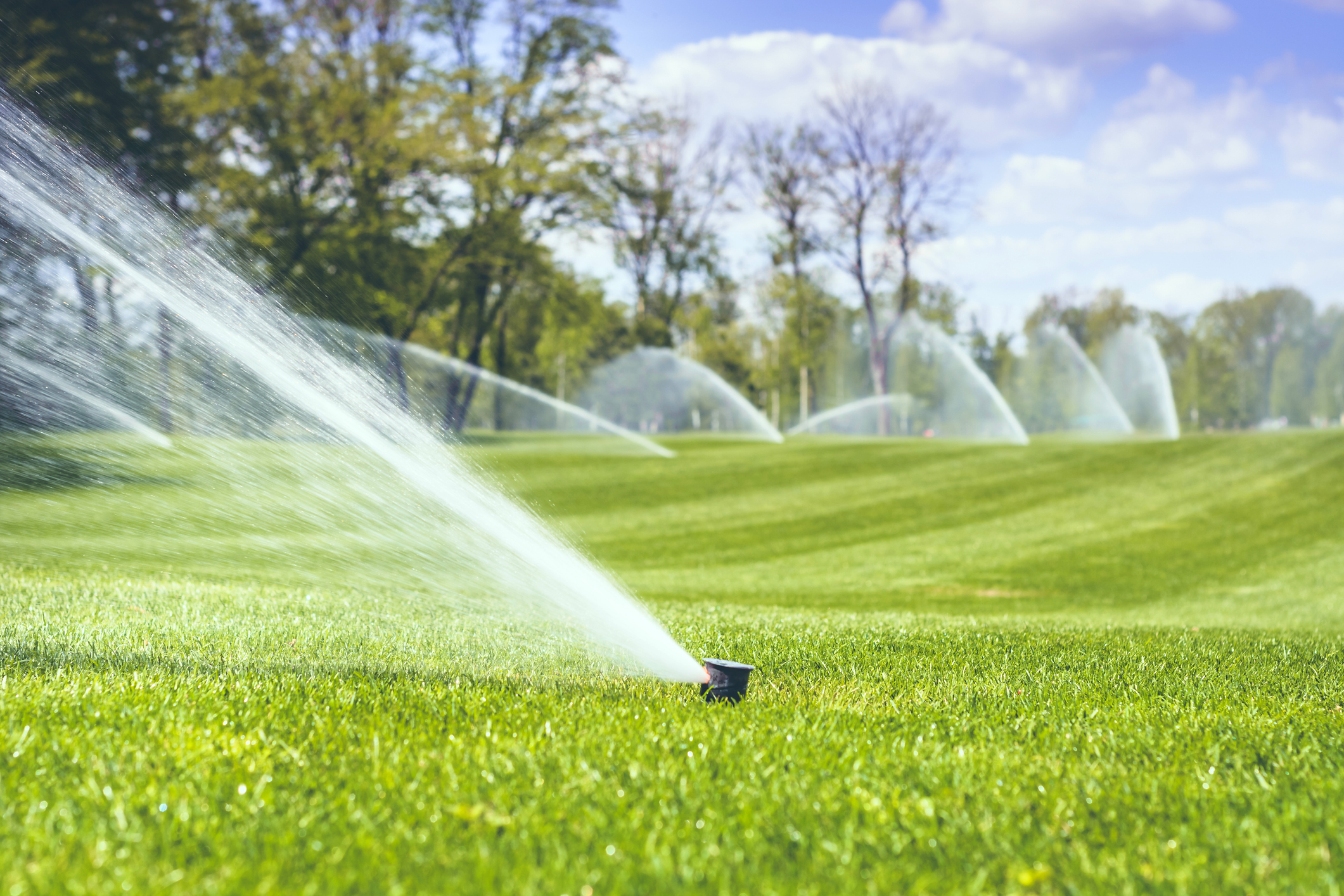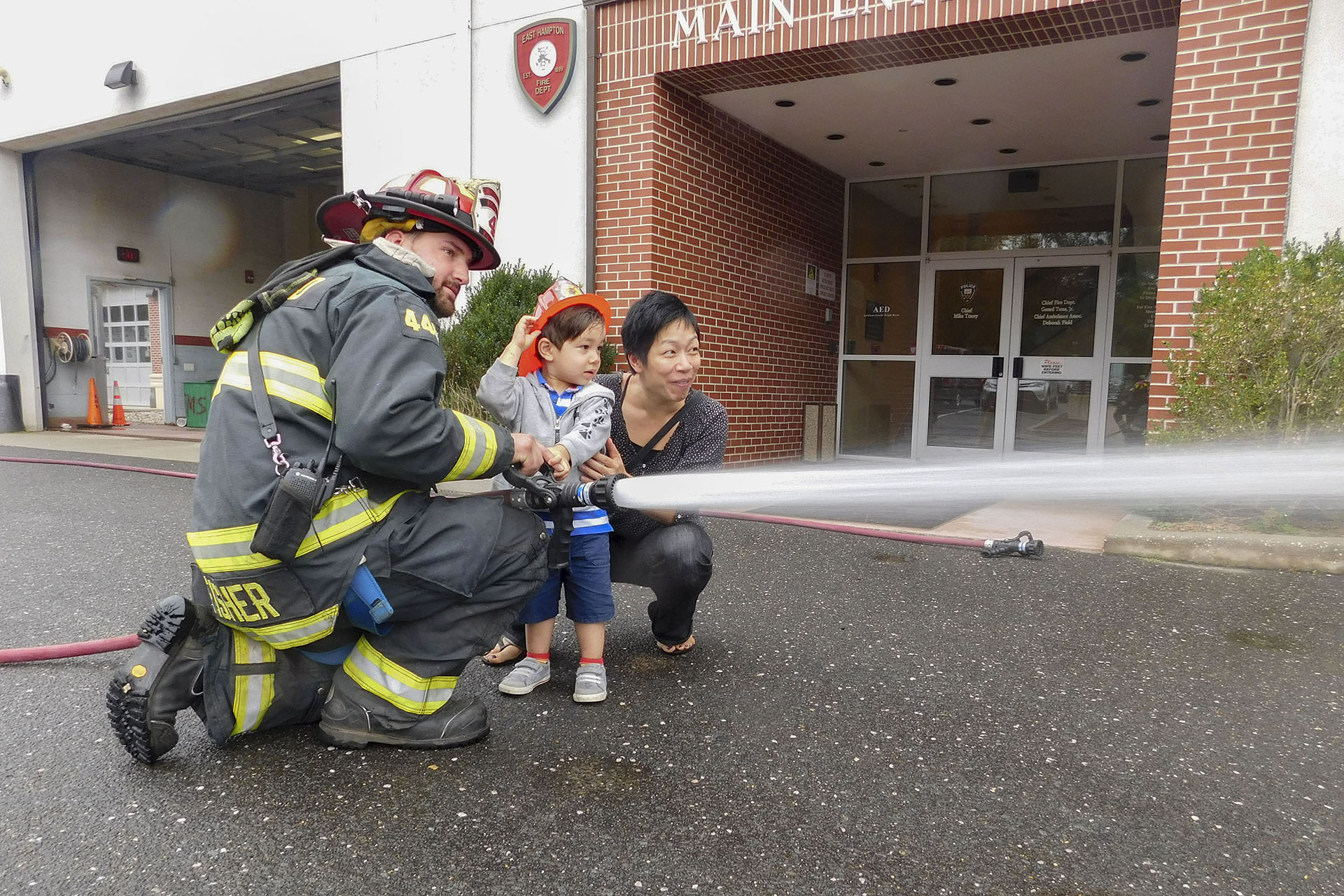Water Worries: East End Dangerously Flouts Conservation Efforts Amid Drought

East End residents are more concerned with ensuring their grass is greener than the other side than they are about conserving water so firefighters can extinguish flames if a wildfire erupts amid an ongoing drought.
That’s the word from local officials who have been pleading with the public to stagger the time when they water their lawns, especially on the South Fork, where residents have instead used more water than the region has in nearly a decade, according to the Suffolk County Water Authority (SCWA).
The agency has deployed mailers, road signs and robocalls, among other outreach efforts urging people to use less water, to no avail. It sent scouts into the community who reported finding most properties continue to water their lawns at the same time, around 6 a.m., as prevailing wisdom suggests is the ideal irrigation time.
“It is quite evident that our message goes pretty much unheeded,” Michael O’Connell, SCWA’s director of production control, told Dan’s Papers.
New York State issued a drought watch for Suffolk and 21 other counties in late July after below-average rainfall this summer and has since expanded it to Nassau and most of the 62 counties statewide.
SCWA also issued a Stage 1 Water Emergency Alert in the towns of Southampton, Southold, East Hampton and Shelter Island “to ensure that there is sufficient water for firefighting and other emergency purposes.”
The agency urged residents countywide to stop all irrigation between midnight and 7 a.m., refrain from all non-essential water usage, reduce shower times and embrace other water-saving measures.
As of August 18, the U.S. Drought Monitor placed the entire South Shore of Long Island under a severe drought, while the North Shore is experiencing moderate drought conditions.

The county received 2.5 inches less rain than normal from August 1–22 and about half of the normal 10.35 inches of rain it sees from June 1 to August 22, the National Weather Service (NWS) reported. Despite a little bit of recent rainfall, the forecast as of press time did not show a break in the dry spell anytime soon.
“It looks like the conditions are going to continue,” said James Tomasini, an Upton-based NWS meteorologist.
The issue is distinct from a mega-drought in the West where reservoirs are drying up in the Colorado River Basin, which nearly 40 million Americans rely on for drinking water. In that case, banks along parts of the Colorado River where water once streamed are now just caked mud and rock as climate change makes the Western U.S. hotter and drier. More than two decades of drought have done little to deter the region from diverting more water than flows through it, depleting key reservoirs to levels that now jeopardize water delivery and hydropower production.
Long Island, however, gets its public drinking water from subterranean aquifers that are projected to hold hundreds of years worth of agua. The issue locally is that the SCWA infrastructure — the pumps, water towers and mains — are working at capacity to keep up with the increased demand caused by the drought.
O’Connell said Southampton and East Hampton used about 38,000 gallons of water per minute around 5 a.m., which is indicative of widespread sprinkler use and is the most the agency has seen since 2015. By comparison, at 6 p.m., when most people are awake and businesses are open, the area uses about 15,000 gallons per minute, he added.
“When everybody is supposedly still in bed, we’re pumping more than double … than we are when people are active, stores are open,” he said. “That’s a lot of water for irrigation.”
The demand would inhibit firefighters ability to douse flames at those peak water use hours.
“We have about every asset we own operating at full capacity, and we’re still getting dangerously low in our water storage tanks to the point where we’re concerned that if there were to be an emergency at that point in time — because of the lower storage which leads to a lower water pressure — if there’s a fire, we’re going to have some serious issues,” O’Connell said.
The concern spilled over to local fire officials, especially given the risk of wildfires during a drought. A stubborn wildfire that broke out near Montauk earlier this summer burned about 25 acres in a hard-to-reach brushland.
“Unfortunately, during times of such dry conditions, we see an increase in the number of brush and wildland fires,” said Town of Brookhaven Chief Fire Marshal Christopher Mehrman, noting that the issue is especially concerning in wooded areas, such as the Pine Barrens, the vast woodlands preserved to protect the aquifers from pollution.
During a recent news conference reminding New Yorkers that September is National Preparedness Month and peak Atlantic Hurricane season, Gov. Kathy Hochul joined in calls to urge residents to give the sprinklers a rest for the good of the community.
“We all love green grass, but there’s always next year,” she said. “Only water lawns when really necessary, reuse water that you can collect in barrels. Raise lawnmower to higher, doesn’t always have to be this short. You can raise up the mower cutting levels as well. And you know, just simple things like not having to hose down a sidewalk, use a broom for God’s sakes. You can do this, and fix all the leaky pipes. So, there are a lot of things you can do as an individual. Collectively, it makes a difference.”
SCWA’s O’Connell agreed.
“People don’t need to irrigate on a daily basis,” he said, suggesting residents water their lawns in the afternoon or evening instead to stagger demand. “Every other day is more than enough.”
~ With Associated Press



